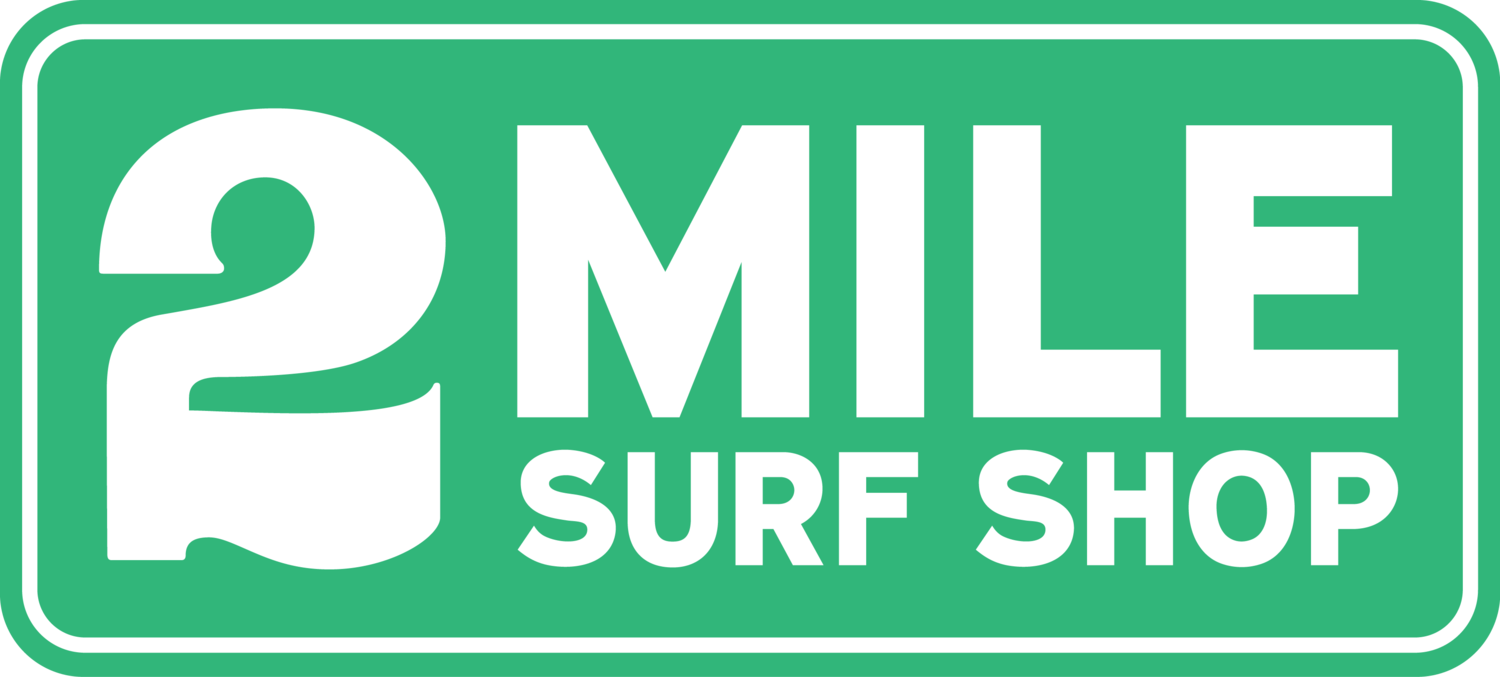Surfboards
The Selection at 2 Mile
2 Mile Surf Shop carries a wide range of surfboards in different sizes and materials. Shapers include Mystic, Junod, Vernor, Walden, Juicebox, Woodin, Doyle, Torq, INT, SurfTech and Catch Surf.
Custom made surfboards are also available from any of our local hand-shapers, most of which are located in Santa Cruz, CA and all have local wave knowledge.
Many of the boards we carry are longboards, which are great for the small waves and long rides you get in Bolinas. We also have a small selection of short boards, fish, retro shapes, stubbies, hybrids and mid-length eggs. Fish, eggs and retro boards have become popular for short boarders who don't want to longboard when the waves are small and longboarders who don't want to take out a big longboard when the swell picks up.
About Surfboards
Surfboards can be made from a variety of materials. Some are made in the US and hand-shaped and some are mass-produced overseas and designed on a computer.
The majority of surfboards you see in the water are hand-shaped by surfers in the US. They're made out of polyurethane foam blanks. The foam blanks are made from a mix of chemicals that are poured into concrete molds that resemble surfboards. Shapers can order the blanks in hundreds of different lengths, thickness, and widths depending on the type and size of surfboard they want to shape. After the board is shaped, it's sent out to be glassed. The glassers wrap the board with fiberglass cloth and laminate the cloth with polyester resin. When the resin cures, the board is sanded and typically finished with a gloss coat. The board is then ready to be taken out in the water.
In 2005, Clark Foam, the biggest manufacture of polyurethane foam blanks abruptly closed down. This has prompted surfboard shapers to start using new and innovative materials for the foam blanks. EPS / Styrene emerged and has become a favorite blank for many shapers. EPS blanks are made from small foam balls that are heated and blown into block-like molds. It's from this rough block that shapers produce boards. The finished board is fiberglassed but with an epoxy, rather than polyester, resin.
The epoxy boards have some advantages. The styrene foam has a uniform density and is lighter and stronger. The foam can be recycled, and the epoxy resin is less toxic than polyester resin. On the other hand, it takes more time to shape an epoxy board, and it therefore costs a little more.
In the past few years, some surfboard factories have moved overseas to take advantage of low cost labor and lax environmental regulations.
Some of the mass-produced boards are made out polyurethane foam and fiberglassed with polyester resin. But they're cut and shaped by a computer router, which helps to make them a consistent and dependable product.
Most of the boards made overseas are made of EPS / styrene foam and glassed with epoxy. But these boards undergo one more process. They're wrapped in a layer of PVC skin, and covered with another layer of fiberglass and epoxy resin. Then they're put in a mold and pressed together. When the resin cures, the board is sanded and painted. These boards are very strong and light. Also, they only come in a limited range of shapes and sizes. The flex pattern and buoyancy is also different from traditional foam.
The right board for you
Whatever type board you want to ride, we have some great choices for you check out. The 2 Mile sales staff has years of surfing experience and has tried many types of boards. We're happy to help you make the right decision. And don't forget, we rent many different types of boards. This is a safe way to try something new.

